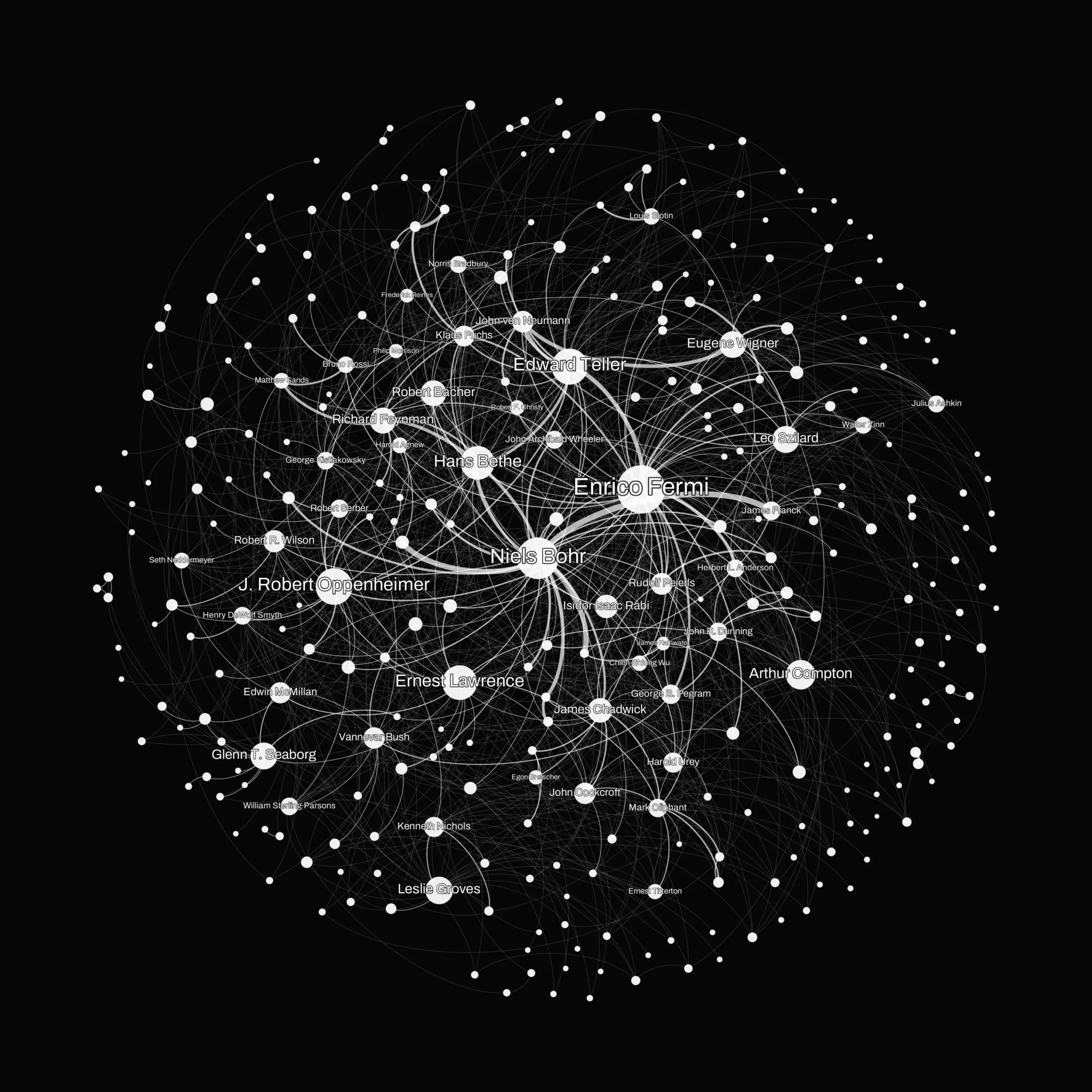The Manhattan Project, a covert and controversial research endeavor that led to the development of the first atomic bombs during World War 2, remains one of the largest and most impactful scientific collaborations in human history. Recently, Milán Janosov, Founder of Geospatial Data Consulting and Chief Data Scientist at Baoba, undertook the task of mapping the relationships between the scientists involved in this groundbreaking project. Using techniques rooted in network science, Janosov dove into this intricate web of connections to reveal a captivating portrayal of the Manhattan Project’s scientific community.
The release of the popular movie “Oppenheimer” earlier this year sparked significant public interest in the Manhattan Project and the extensive research efforts behind the development of the atomic bomb. Inspired by this renewed attention, Janosov, a trained network scientist with a physics background, embarked on a research journey to explore the complex relationships within the project. Departing from the traditional approach of relying on shared publications, Janosov sought a different path due to the classified nature of some of the Manhattan Project’s science.
To map the relationships between the scientists involved in the Manhattan Project, Janosov turned to the most public information platform available – Wikipedia. Collecting the Wikipedia pages of every Nobel laureate, he compiled a comprehensive dataset for analysis. Leveraging language processing techniques, Janosov quantified the frequency of mentions and references to other laureates within the pages. This approach allowed him to build a network representation where each scientist served as a node, connected based on Wikipedia’s mentions and references. Fascinating links between scientists emerged, such as the strong connection between J. Robert Oppenheimer and Enrico Fermi, as indicated by the significant number of mentions on Oppenheimer’s Wiki page.
The resulting map created by Janosov portrays the most renowned scientists from the Manhattan Project as dots, with lines representing the connections between them. This intricate web of relationships reveals the research circles that closely collaborated during the project. These communities highlight the different departments and well-known cliques, such as the Theoretical Division with Richard Feynman or the group of World War II refugees centered around Niels Bohr. However, one of the most intriguing aspects of the network is the Hungarian immigrants, affectionately known as the “Martians” – Edward Teller, Eugene Wigner, Leo Szilard, and John von Neumann. This group played a foundational role in the dawn of the atomic age, and their strong connectedness is clearly visible within the network when properly color-coded.
Janosov’s colorful map of the Manhattan Project not only captures the historical significance of this scientific collaboration but also demonstrates the value of network science in visualizing and understanding complex systems. By utilizing network analysis, researchers can identify communities, patterns, and influential individuals within these systems. This rapidly evolving area of research holds great potential for shedding new light on a wide range of topics spanning both science and the humanities. As Janosov continues to delve into questions related to urban planning, geospatial data science, and sustainability, the power of network science will undoubtedly play a vital role in unraveling the intricate connections that shape our world.
Milán Janosov’s exploration of the scientists within the Manhattan Project offers a fresh perspective on this historically significant endeavor. By leveraging network science and Wikipedia data, Janosov unveils a captivating web of connections between renowned scientists. These findings not only enhance our understanding of the project’s collaborative nature but also showcase the power of network analysis in visualizing human relationships within complex systems. With ongoing advancements in network science, the potential for uncovering new insights into various disciplines continues to grow.



Leave a Reply